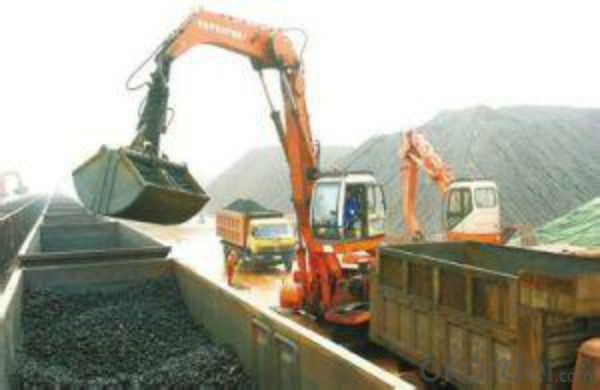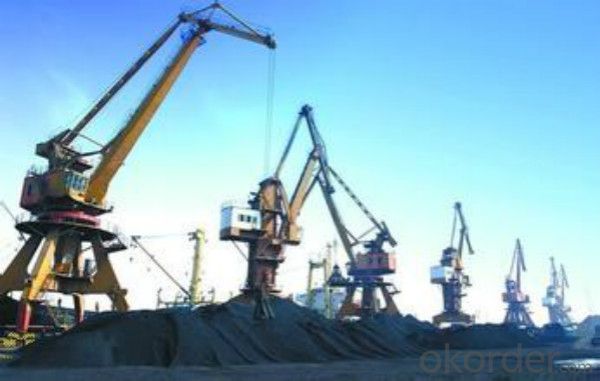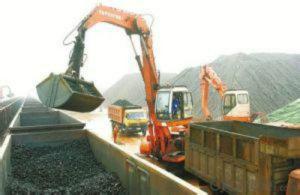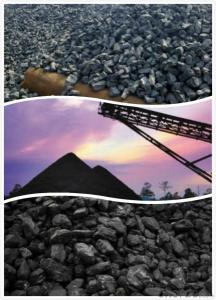Ash 13%Max Met Coke 10- 25mm Made in China
- Loading Port:
- Tianjin
- Payment Terms:
- TT OR LC
- Min Order Qty:
- 900 m.t.
- Supply Capability:
- 15000 m.t./month
OKorder Service Pledge
OKorder Financial Service
You Might Also Like
Product Description
Met Coke(metallurgical coke) is a carbon material resulting from the manufactured purification of multifarious blends of bituminous coal. its medium-grade composite contains a high occurrence of unstable components.
Features
It is widely used in casting and metallurgy Smelting every tons Irons need about 0.4 to 0.6ton coke. As the reducing agent in the steel-making and foundry industry. It is playing more and more important role in the steel industry.
Specification
Item No. | Ash (%) max | S (%) max | F.C. (%) min | V.M (%) max | Moisture (%) max | P (%) max | CSR (%) min | CRI (%) max | Cal.Value (≥Kcal/Kg) |
NF-M001 | 9 | 0.6 | 89.5 | 1.2 | 5 | 0.035 | 65 | 25 | 7250 |
NF-M002 | 10.5 | 0.6 | 88 | 1.2 | 5 | 0.035 | 65 | 25 | 7100 |
NF-M003 | 12 | 0.6 | 86.5 | 1.5 | 5 | 0.035 | 63 | 28 | 6900 |
NF-M004 | 13 | 0.6 | 85.5 | 1.5 | 5 | 0.035 | 60 | 30 | 6800 |
Pictures


FAQ
1 What is the packing?
Packaging Details: | 1. jumbo ton bag |
Delivery time? Delivery Detail: |
15 days after we get the advanced payment or original L/C |
2 Payment terms?
D/P, L/C,T/T with advanced payment
- Q:What is the most common isotope of carbon?
- Carbon-12, the most prevalent carbon isotope, derives its name from its atomic mass of 12 atomic mass units, determined by the composition of protons and neutrons in its nucleus. It dominates the natural abundance of carbon, comprising approximately 98.9% of all carbon atoms. In contrast, carbon-13 and carbon-14, the other two carbon isotopes, occur in lesser quantities and proportions. Being stable and resistant to radioactive decay, carbon-12 holds great significance as a vital element for sustaining life on our planet.
- Q:How does carbon monoxide affect air quality and human health?
- Carbon monoxide, a gas produced when fossil fuels like gasoline, coal, and wood are incompletely burned, is a colorless and odorless substance. It plays a major role in air pollution and has significant impacts on both air quality and human health. Concerning air quality, carbon monoxide is classified as a criteria air pollutant, meaning it is regulated by government agencies due to its harmful effects. When released into the atmosphere, CO combines with other pollutants like nitrogen oxides and volatile organic compounds, resulting in ground-level ozone formation, a key component of smog. High levels of ground-level ozone can cause respiratory issues, particularly for individuals with pre-existing respiratory conditions such as asthma. Moreover, carbon monoxide acts as a potent greenhouse gas, contributing to global warming and climate change. It traps heat in the atmosphere, preventing its escape into space and leading to rising temperatures and altered weather patterns. In terms of human health, carbon monoxide is extremely toxic. When inhaled, it binds to hemoglobin in the blood, reducing its ability to transport oxygen to vital organs and tissues. This can result in various health problems, ranging from mild symptoms like headaches, dizziness, and fatigue to more severe conditions such as chest pain, confusion, and even death. Vulnerable populations, including children, the elderly, and those with pre-existing heart or lung conditions, are particularly susceptible to the detrimental effects of carbon monoxide. Exposure to high levels of carbon monoxide can occur in different settings, both indoors where combustion sources like gas stoves, heaters, and fireplaces are present, and outdoors in areas with heavy traffic or industrial emissions. To mitigate the impact of carbon monoxide on air quality and human health, regulatory measures such as emission standards for vehicles and industrial sources have been implemented. Additionally, raising public awareness through campaigns and utilizing carbon monoxide detectors in homes and workplaces are crucial for detecting and preventing potential exposure to this harmful gas. In conclusion, carbon monoxide significantly impacts air quality and human health. It contributes to air pollution, including the formation of ground-level ozone and greenhouse gas emissions, which have adverse effects on respiratory health, the environment, and climate change. Understanding the sources, effects, and implementing appropriate measures to reduce exposure to carbon monoxide is vital for safeguarding both air quality and human well-being.
- Q:How is carbon used in the manufacturing of electronics?
- Carbon is used in the manufacturing of electronics in various ways. One common application is in the form of carbon nanotubes, which are used to make smaller and more efficient transistors. Carbon is also used as a component in lithium-ion batteries, providing high energy density and longer-lasting power. Additionally, carbon is used as a conductive material in circuit boards and as a protective coating to prevent static electricity buildup.
- Q:What are the properties of carbon-based ceramics?
- Carbon-based ceramics have a unique combination of properties that make them highly desirable materials. They exhibit excellent high-temperature stability, exceptional chemical resistance, and high mechanical strength. Additionally, they have low density, low thermal expansion, and good electrical conductivity. These properties make carbon-based ceramics suitable for a wide range of applications, including in aerospace, automotive, and electronics industries.
- Q:How accurate is carbon dating?
- Carbon dating is generally considered to be a highly accurate method for determining the age of organic materials up to around 50,000 years old. However, it becomes less precise for older samples due to the decreasing amount of carbon-14 remaining. Additionally, certain factors such as contamination and environmental variations can affect the accuracy of the results.
- Q:How does carbon impact the formation and intensity of hurricanes?
- Carbon, specifically in the form of carbon dioxide, plays a significant role in impacting the formation and intensity of hurricanes. The increase in carbon emissions due to human activities, such as burning fossil fuels, deforestation, and industrial processes, has led to a rise in atmospheric carbon dioxide levels. This, in turn, contributes to the phenomenon known as global warming. Global warming, caused by the greenhouse effect, leads to an increase in sea surface temperatures. Warmer ocean waters provide the necessary energy and moisture for hurricanes to form and intensify. As the atmosphere warms, it can hold more water vapor, which acts as fuel for hurricanes, increasing their potential for stronger and more intense storms. The warming of the atmosphere also alters the atmospheric conditions that influence hurricane formation. It changes the vertical wind shear, which is the difference in wind speed and direction at different altitudes. Low wind shear is favorable for hurricane development, as it allows the storm to organize and strengthen. However, global warming can disrupt this balance and create unfavorable wind shear patterns, inhibiting hurricane development. Furthermore, the increased carbon dioxide levels in the atmosphere contribute to ocean acidification. As carbon dioxide dissolves in seawater, it forms carbonic acid, which lowers the pH of the ocean. Acidic waters can have detrimental effects on marine life, including coral reefs, which act as natural barriers against storm surges during hurricanes. The degradation of these ecosystems weakens their ability to protect coastal communities from the destructive impacts of hurricanes. In summary, carbon emissions and the subsequent increase in carbon dioxide levels have a profound impact on the formation and intensity of hurricanes. The warming of the atmosphere and ocean, along with changes in wind shear patterns, create conditions that favor the development and intensification of hurricanes. Additionally, ocean acidification resulting from excessive carbon dioxide levels weakens natural defenses against storm surges. It is crucial to address the issue of carbon emissions and reduce our carbon footprint to mitigate the potential consequences of climate change and its impact on hurricanes.
- Q:How does carbon impact the prevalence of earthquakes?
- Carbon does not directly impact the prevalence of earthquakes. Earthquakes are primarily caused by the movement of tectonic plates, which are massive sections of the Earth's crust that float on the semi-fluid layer underneath. When these plates collide, slide past each other, or separate, it can cause a release of energy in the form of seismic waves, resulting in an earthquake. Carbon, on the other hand, is a chemical element that is present in various forms in the Earth's atmosphere, oceans, and living organisms. While carbon dioxide (CO2) emissions from human activities contribute to climate change and affect the Earth's ecosystems, there is no direct link between carbon emissions and the prevalence of earthquakes. However, it is worth noting that some geologists and scientists speculate that human activities, such as the extraction of fossil fuels, may indirectly influence seismic activity. The extraction of large quantities of oil, gas, or water from the Earth's crust can potentially lead to changes in the underground pressure and stress distribution, which might trigger small-scale seismic events known as induced earthquakes. These induced earthquakes are typically of low magnitude and are localized to the area where the extraction is taking place. Overall, while carbon emissions and human activities may have some impact on seismic activity in specific localized areas, the prevalence of earthquakes on a global scale is primarily driven by tectonic plate movements and not directly influenced by carbon.
- Q:What are the long-term effects of increased carbon emissions on ecosystems?
- Ecosystems are significantly impacted by the increase in carbon emissions, with climate change being one of the most notable consequences. Carbon dioxide, a greenhouse gas, traps heat in the atmosphere and leads to rising temperatures, changes in weather patterns, and more frequent and intense extreme weather events like hurricanes, droughts, and wildfires. These climate changes have numerous negative effects on ecosystems. For example, the rising temperatures directly affect the behavior and physiology of plants and animals. Many species have specific temperature requirements for their survival, feeding, and reproduction. Even slight changes in temperature can disrupt their life cycles, causing population declines or even extinctions. Moreover, the increase in carbon emissions contributes to ocean acidification. This process occurs when excess carbon dioxide in the atmosphere dissolves in seawater, forming carbonic acid. The acidification has devastating consequences for marine ecosystems, especially for coral reefs and shell-forming organisms such as oysters and clams. It weakens their structures made of calcium carbonate and hinders their growth and reproduction, ultimately leading to their decline. Furthermore, carbon emissions influence the distribution and composition of plant communities. Carbon dioxide is essential for photosynthesis, and elevated levels can enhance plant growth and productivity. However, this can also result in changes in plant composition and the competitive balance between species, favoring certain fast-growing species at the expense of others. This disruption can impact the intricate relationships between plants, pollinators, herbivores, and other organisms, affecting the entire food web. Additionally, increased carbon emissions contribute to the loss of biodiversity. Many species are highly specialized and adapted to specific environmental conditions. As habitats change due to climate change, some species may struggle to adapt or find suitable alternatives, leading to declines or local extinctions. This loss of biodiversity can have cascading effects throughout ecosystems, disrupting ecological processes and reducing the resilience and stability of entire ecosystems. In conclusion, the increase in carbon emissions has far-reaching and harmful long-term effects on ecosystems. It causes climate change, ocean acidification, alters plant communities, and drives biodiversity loss. It is crucial to reduce carbon emissions and mitigate climate change in order to protect and preserve the health and functioning of ecosystems for future generations.
- Q:How do forests act as carbon sinks?
- Forests act as carbon sinks by absorbing carbon dioxide from the atmosphere through the process of photosynthesis. Trees and other plants take in carbon dioxide and convert it into oxygen, while storing the carbon in their trunks, branches, and roots. This stored carbon remains in the forest ecosystem, reducing the amount of greenhouse gases in the atmosphere and helping to mitigate climate change.
- Q:Will long-term use of carbon alloy chopsticks cause cancer?
- The chopsticks are washed with water for a long time, and the water content is especially high. The chopsticks are placed in the non ventilated place for a long time, and the chances of deterioration of the chopsticks are improved." Huang Yahui said, especially the moldy chopsticks, may be contaminated by aflatoxin. It is understood that aflatoxin is the 1 class of carcinogens, is a highly toxic highly toxic substances, human and animal liver tissue will have a damaging effect, can lead to serious liver cancer or even death. Huang Yahui warned that the public should be weekly chopsticks into boiling water after half an hour, placed in the air to air dry before use, it can achieve the disinfection effect, and can effectively and conveniently remove mildew in chopsticks. In addition, it is best to use half a year to replace the new chopsticks, so you don't have to worry too much. "The selection of chopsticks is also very exquisite."." Huang Yahui said, "the ideal chopsticks are bamboo chopsticks and non staining wooden chopsticks.". After the dyed or painted wood, paint and stain will enter the body with food. When in use, especially the stain in heavy metals, benzene and other harmful substances, can cause gastrointestinal inflammation, ulceration, erosion, serious can cause cancer.
1. Manufacturer Overview |
|
|---|---|
| Location | |
| Year Established | |
| Annual Output Value | |
| Main Markets | |
| Company Certifications | |
2. Manufacturer Certificates |
|
|---|---|
| a) Certification Name | |
| Range | |
| Reference | |
| Validity Period | |
3. Manufacturer Capability |
|
|---|---|
| a)Trade Capacity | |
| Nearest Port | |
| Export Percentage | |
| No.of Employees in Trade Department | |
| Language Spoken: | |
| b)Factory Information | |
| Factory Size: | |
| No. of Production Lines | |
| Contract Manufacturing | |
| Product Price Range | |
Send your message to us
Ash 13%Max Met Coke 10- 25mm Made in China
- Loading Port:
- Tianjin
- Payment Terms:
- TT OR LC
- Min Order Qty:
- 900 m.t.
- Supply Capability:
- 15000 m.t./month
OKorder Service Pledge
OKorder Financial Service
Similar products
New products
Hot products
Related keywords





























